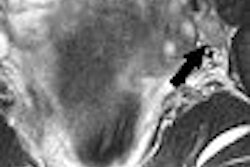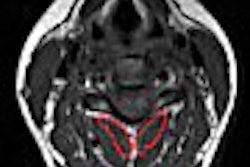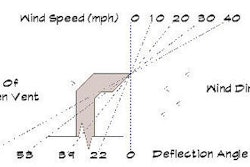Don't you love it when pop culture rewrites our vocabulary? Ten years ago "fly" meant being airborne. Today it means "stunning" or "cool" (assuming "cool" still means what it did 10 years ago). But if you misuse "fly" today, you're only likely to get a snide look from the hipper-than-thou class or ridiculed by your children. We only wish that the consequences were similarly inconsequential with regard to the recent vocabulary rewrite undertaken by ASTM International (formerly the American Society for Testing and Materials, now known solely by their acronym), and the U.S. Food and Drug Administration (FDA).
In October last year we featured an article on the proposed language changes (subsequently adopted) to the industry-standard definitions of safety for items used in the MRI suite. No longer is MR Compatible a sanctioned term. The new standard also introduces MR Conditional and a nearly self-explanatory MR Unsafe category. These, fortunately, are not likely to be significant sources of confusion, unlike the vocabulary sea change that will be required as we all convert from the old MR Safe to the new MR Safe, which have significantly different meanings.
First, a quick review. The old MR Safe meant that an object was safe as long as it was used in accordance with the conditions defined by the object's manufacturer or vendor. These conditions weren't always effectively communicated, and it wasn't until an MRI patient was reportedly injured by an (old) MR Safe device that the language received the scrutiny that ultimately led to the recent revision.
Today's MR Safe means that an object or device will not be affected by an MRI in any significant way that might harm a patient. This means that the device is not only wholly nonmagnetic, but it also means that all components are also nonconductive and nonradiofrequency (RF)-reactive. Perhaps your tennis shoes qualify if they don't have metallic threads or metal grommets for the laces, but we can rule out virtually every piece of clinical hardware designed for the MRI suite.
Apart from the obvious confusion of using the same phrase to mean two completely different things, the situation is exacerbated by three bureaucratic limitations of the new standard.
First, the FDA has not demanded or even publicly requested that items that had been designated with the old identifiers be reclassified and relabeled -- despite the fact that much of the test data under the old nomenclature would be applicable under the new naming system. For many products and devices, this would simply be an issue of manufacturers identifying which new sticker is applicable for a previously marketed piece of equipment.
Imagine a facility that bought a power injector for its MRI five years ago, and today buys what amounts to the same product from the same manufacturer. One of these two devices would have been marketed as MR Safe at the time it was bought, and the other would be identified as MR Conditional because the presence of metallic components would exclude it from the new MR Safe classification. Two similar, if not identical, products side by side have labeling designations that are contradictory under the new standard.
If it were determined that having objects that might cause harm to patients but were labeled "safe" was problematic, imagine how much more difficult the situation would be, adding a whole new level of variability for those facilities that don't retroactively apply the new standard.
Second, the new standard is not a requirement for new products. To become legally required, the FDA would need to have legislation passed, and the political will to even attempt this seems to be lacking at the moment. For now, the current standard has the limp authority of a request.
Although polite requests from the FDA to manufacturers looking for approval of clinical devices can carry significant weight, failing to provide testing and labeling in accordance with this new standard would not be sufficient grounds for withholding FDA approval for a clinical product designed for the MRI suite.
Even manufacturers who want to follow the FDA recommendations have a hard time doing so. Despite having adopted the ASTM-developed standard, the FDA has yet to publish any guidance designed to assist manufacturers in the what, where, and how of identifying MRI products. How big are the labels to be? What information is to be included on them? Where must the labeling be provided? What about products marketed prior to the new standard? These questions aren't likely to be answered by the FDA in a definitive way for many more months.
Third, according to journal reports and published studies, projectile-effect accidents in which ferromagnetic objects are drawn to the MRI appear to be among the most frequent accidents in the magnet room. Although these accidents do occur with clinical devices, many of the objects drawn to the MRI scanner are not FDA-approved clinical devices, but are items such as wheelchairs, gurneys, stools, cell phones, floor polishers, and so on.
Manufacturers and vendors of nonclinical devices for the MRI suite often promote their products with a dizzying array of marketing jargon. What does "nonmagnetic" mean when a product is made with ferromagnetic components? What about those products marketed as MR Safe, which clearly do contain metallic components yet don't describe the limits to tested safe use? The new standard does not effectively address this large proportion of products and appliances that are crucial to safety in the MRI suite.
The new language has very specific consequences to MRI service providers. Trying to operate under two standards will promote confusion and may lead to an increased likelihood of accidents. Therefore we recommend that MRI service providers adopt and convert to the current ASTM/FDA guidance. This includes a number of steps:
Purchase or print sufficient numbers of the new labels to be able to identify the items that reside in (or are frequently brought to) the MRI suite as MR Safe, MR Conditional, or MR Unsafe under the new criteria.
Obtain the safety testing results for all previously purchased MRI suite equipment. Ask the manufacturer or vendor of the equipment for its classification under the new standard and label the product accordingly.
When labeling MR Conditional equipment, include the conditions for use on the label whenever possible (for example, "Tested to 1.5-tesla").
Utilize a high-strength handheld magnet or a ferromagnetic detector to test the magnetic properties of any new object brought to the suite (or any existing untested object).
Keep a stock of MR Unsafe labels handy to tag any grossly magnetic ferromagnetic object or device that must be brought inside the confines of the American College of Radiology Zone III (areas immediately outside the magnet room). This will help readily identify potentially dangerous wheelchairs, housekeeping equipment, oxygen cylinders, carts, pumps, and so on for the next time they're brought to the suite.
When buying any new products or materials for the MRI suite, ignore all generic marketing safety terminology and ask, specifically, if the product has been tested in accordance with the new ASTM/FDA guidelines and if it is labeled accordingly. If you buy products for which the answer to either of these two questions is "no," you must be prepared to thoroughly test and label it prior to putting it into service in your suite.
Whenever an unlabeled object is brought into your suite for the first time, even if the person bringing it professes that it is safe, test and label it accordingly.
This transition from the old terminology to the new should be little more than a brief inconvenience. If your facility has appropriately identified products purchased under the previous standard and has information about the tested limits to safe use, conversion should be a breeze. If you don't have this information on hand, it is data that you should get from the manufacture or vendor of each device, and either have it indicated directly on the product or keep it close at hand for reference.
Obtain a stack of labels and start identifying and labeling the materials in your suite. A concerted effort should enable you to label virtually everything of concern in the MRI suite in a day. After your facility has embraced the new standard, make sure that there are no conflicts of vocabulary between your staff and any new persons or products introduced to your MRI suite. Until the conversion is made, awkward exchanges, such as the one below, may become increasingly common:
Tech: "So, is this new procedure light safe?"
Vendor: "Do you mean safe safe, or just safe?"
Tech: (aside) "Hey, Earl, were using the new 'safe,' right?"
Vendor: "Did I mention that it's nonmagnetic?"
Tech: "Is that nongrossly magnetic, nonferromagnetic, or completely ferrous-free?"
Vendor: "Um ... I think the first one ... but it's safe."
Tech: "Which 'safe' was that again?"
Vendor: "You know, if I may say so myself, this is one fly procedure light."
Tech: "Oh. I thought it was supposed to be dope. Never mind then."
By Robert Junk and Tobias Gilk
AuntMinnie.com contributing writers
November 22, 2006
Reprinted from www.mri-planning.com by permission of the authors. If you would like more information on any aspect of MR facility design or safety, please contact Robert Junk or Tobias Gilk at Jünk Architects.
Related Reading
I see dead magnets -- could your quench pipe be a killer? November 16, 2006
MRI accident data: You don't know more than you think you do, October 27, 2006
DRA and MR patient throughput -- reimbursement cuts vs. unconventional wisdom, October 17, 2006
Burying an MRI: A tragedy in two acts, September 25, 2006
MRI safety in Canada, September 1, 2006
Copyright © 2006 Jünk Architects, PC



















